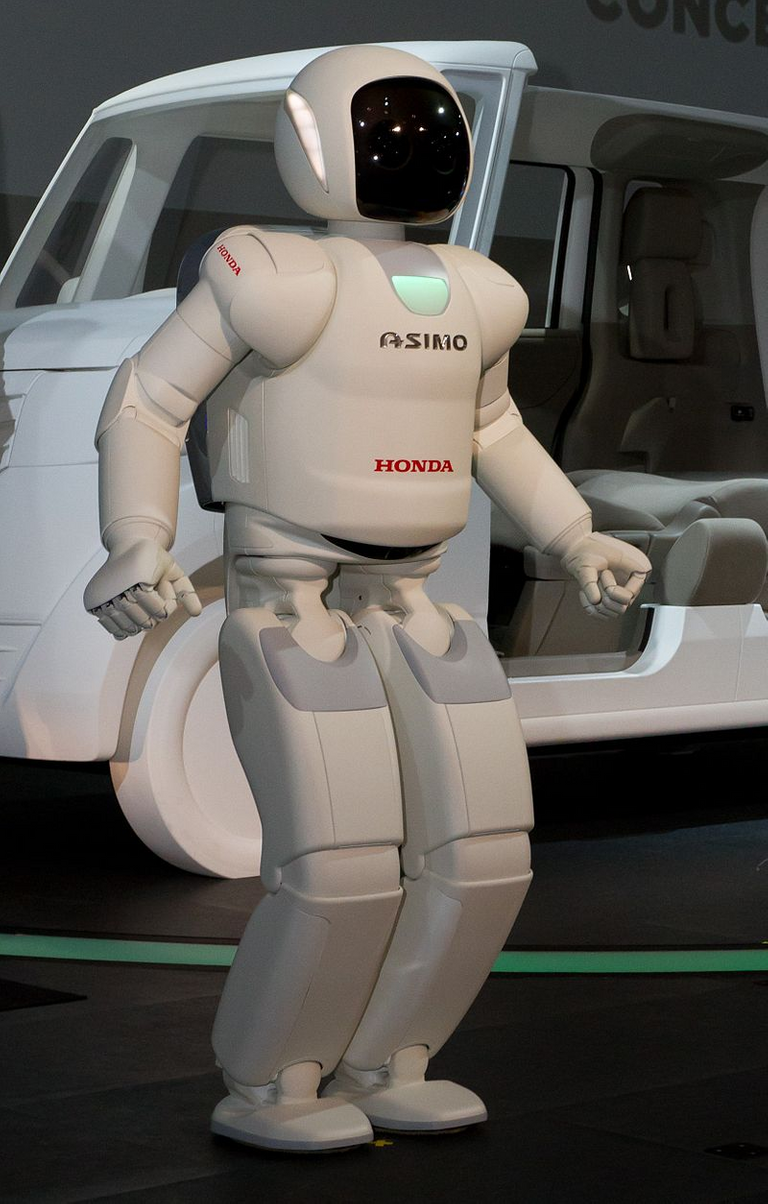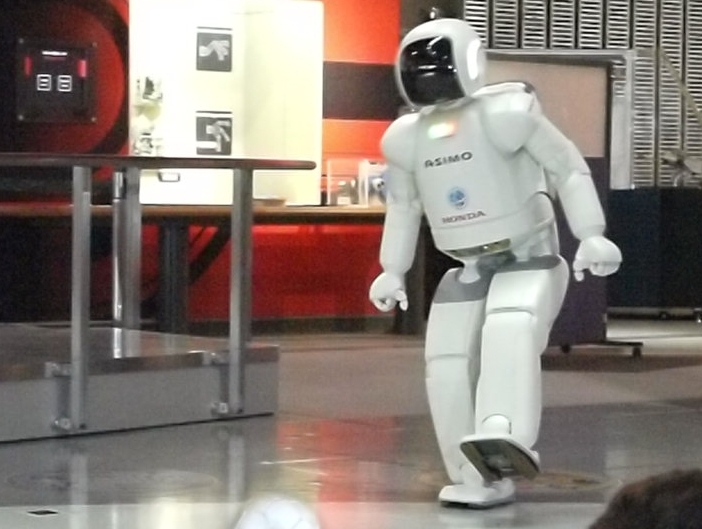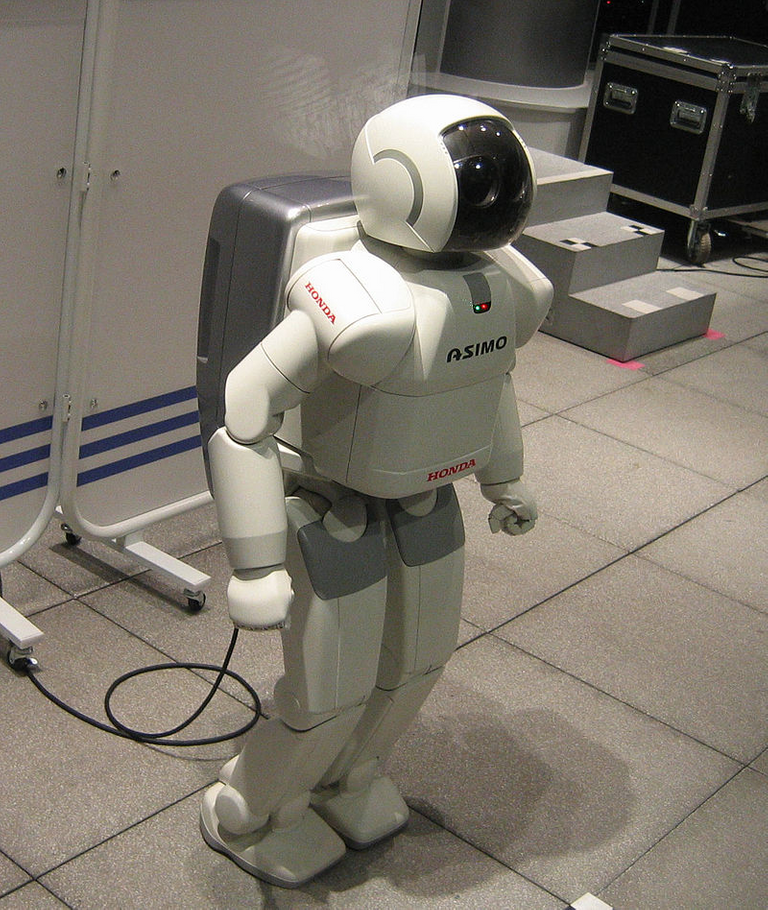ASIMO: World’s Most Sophisticated Humanoid Robot
A humanoid robot is one with a structure that is intended to resemble a human figure. The prototype may be for functional purposes, such as dealing with human apparatus and in the office, or for experimental reasons, such as testing bipedal locomotion. An undisclosed number of humanoid robots have features such as heads with eyes and mouths designed to resemble human faces. Androids are humanoid robots that are built to look like humans.
When working in human-populated environments, a humanoid robot has considerable advantages. The most significant advantage is that a humanoid robot would act as though it were a human in a given situation, without any previous adjustments. Humanoid robots must have strong bodies, high flexibility, a wide range of sensors, and a high level of intelligence. It was planned and constructed better things for all, and operational machines, on the other hand, became more important as robots were used in close proximity to humans to provide assistance.

Honda, a Japanese multinational corporation that manufactures cars, bikes, and power equipment, has developed a new computer that will serve as a foundational technology for advanced intelligence (AI). It analyzes signals from different sensors that are analogous to a living human's visual, auditory, and tactile senses, and thus evaluates the state of the ambient environment and measures the robot's subsequent behavior.
Honda started developing humanoid robots in 1986. The company's goal was to create a walking robot. Over the next two decades, the company produced a dozen prototypes. The Honda E0 was the first bipedal (two-legged) prototype in the Honda E series, and it was created between 1986 and 1993 as an advanced prototype system of consciousness, humanoid walking robots, and wireless movements. The first robots to focus solely on walking were Designs E1 through E6. Honda engineers enhanced the robot's stability and customization by incorporating a head, body, and arms. Honda launched the P1, the first ever human-looking robot, in 1993, with a height of 1.9 m (6'2") and a weight of 175 kg.

ASIMO, the world's first self-governing behavior control technology, was featured in the most recent update of a humanoid robot, published in 2011. ASIMO is a bipedal humanoid robot that was created as a result of research on the E- and P-series. Since its initial release in 2000, Honda has been developing robotics with the aim of coexisting with and assisting humans. ASIMO is an abbreviation for Advanced Phase in Innovative Mobility. For a new age, it represents modern and imaginative versatility.
ASIMO stands 130 cm (4 ft 3 in) tall and weighs 54 kilograms (119 lb.). According to Honda research, the ideal height for a versatility assistant robot will be about 120 cm and thus the average adult's height, allowing it to operate doorknobs and lighting clicks. ASIMO is powered by a single one-hour lithium-ion battery with a voltage of 51.8 volts. By switching from a nickel metal hydride battery to a lithium-ion battery, ASIMO's operating time was extended. ASIMO is powered by a three-dimensional multicore processor developed by Honda, which includes a three-stacked die, a processor, a transmission transmitter, and storage. ASIMO's actions are driven by a CPU that is located in his head. ASIMO is powered by a three-dimensional multicore processor developed by Honda, which includes a three-stacked die, a processor, a transmission transmitter, and storage. ASIMO's actions are driven by a CPU located in the robot's waist region and can be controlled wirelessly by a PC.
AIMO, Honda's now-famous human-like robot, was unveiled on October 31, 2000. ASIMO, the first robot to demonstrate true human-like endurance, was inducted into Carnegie Mellon's Robot Hall of Fame in 2004. Since its debut in 2000, ASIMO has toured the globe and played in front of crowds from all across the globe. ASIMO established the first public presence in the United States in 2002, when it opened the door to the New York Stock Exchange's trading sessions. The robot visited the United States and Canada throughout January 2003 to March 2005, showcasing its capabilities to over 130,000 individuals.

ASIMO went on a North American educational tour from 2003 to 2004, visiting leading technology and science centers and research centers. The aim of the world tour was to encourage students to pursue science by putting on a live show that highlighted ASIMO's capabilities. Furthermore, as part of the ASIMO Technology Circuit Tour, the robot visited prestigious electronics and computer science educational institutions throughout the United States in order to encourage students to pursue their goals in the field of science. ASIMO's second wave debuted in 2005. In November 2011, Honda unveiled an improved version called the "all-new ASIMO."
Furthermore, ASIMO developed the ability to adapt to the movement of human and environmental behaviors. ASIMO, for example, could pause its current operation and change its course of action to satisfy the other party's desire. The collaboration of auditory and visual receptors enables ASIMO to recognize a face and a voice at the same time, allowing ASIMO to differentiate the voices of many people who are speaking at the same time, which is difficult for a human to do.
ASIMO has the ability to forecast the direction a human would travel in the following few phases based on feedback from pre-set space sensors and quickly decide to take an alternate route to avoid a collision with the human if the expected locations of the human and the ASIMO clash. ASIMO's latest version is much more intelligent, autonomous, and constant in its reaction to action, with no human interference required. ASIMO takes a step inside an ace to usable use in congested public areas and office environments, which is possible due to significantly enhanced environment changing capacity both intelligently and physically.
Above all, ASIMO can change its landing angles in the middle of a motion, most likely as a result of strengthened knees, a wider range of leg movement, and cutting-edge advanced control technologies. ASIMO can walk, run, step backwards, jump on one leg, or hop on two legs at all times. ASIMO also gained the potential to contribute such flexible movements as a result of gaining the capabilities to respond more intelligently to shifting external conditions, including walking around an unstable surface whilst keeping a constant stance. The robot was known for its excellent coordination, allowing it to move like such human. The seventh version of the prototype debuted in 2011, standing 130cm tall, weighing 48kg, and moving at a pace of 9kph. It preserves equilibrium by analyzing the environment with several detectors.

Honda developed a completely functional flexible multi-fingered hand with such a sensing system as well as a motion detector implanted simultaneously on its palm and in each and every finger, and on which each finger can be activated independently. This humanoid robot with multi-fingered hand, when combined with object recognition technologies based on visual and tactile sensations, enables the newly built ASIMO to perform dexterous tasks such as picking up a glass container and spinning off the cap, or carrying a soft paper cup to overfill a fluid without splattering anything. ASIMO is also skilled at performing complex finger motions in sign language gestures.
ASIMO also has detectors that enable it to navigate autonomously. The twodigital camera inside the head is being used as a vision sensor to detect obstacles. The ground detector, that further consists over one laser sensor and one infrared sensor, is found in the inner section of the torso. The lower part is detected using a laser sensor. To validate the walkable pathways of the proposed chart, another infrared sensor with automated lens modification depending on brightness is being used to distinguish clusters of ground markings. The robot can clearly identify its current location and will continuously adjust its position as a result of either the pre-loaded map or the recognition of ground markings. Ultrasonic sensors in the front and back sense obstacles.
According to several outlets, work on the Honda ASIMO robot has ceased. Honda has decided to cancel the prototype due to the lack of a payoff. Honda has announced that it will continue to build humanoid robots, but they will not be called ASIMO. Honda's primary focus will shift to designing robotics for more practical applications, such as healthcare and road transportation, in order to put some of ASIMO's inventions to use. In this regard, ASIMO will continue to exist as Honda works to develop products focused primarily on robot engineering.
Note: All images is from Wikimedia
References
Posted with STEMGeeks
Congratulations @juecoree! You have completed the following achievement on the Hive blockchain and have been rewarded with new badge(s) :
Your next target is to reach 55000 upvotes.
Your next target is to reach 1500 comments.
Your next target is to reach 2000 replies.
You can view your badges on your board and compare yourself to others in the Ranking
If you no longer want to receive notifications, reply to this comment with the word
STOPCheck out the last post from @hivebuzz:
Support the HiveBuzz project. Vote for our proposal!
I have seen ASIMO in person before at the emerging science museum in Odaiba, Tokyo. I am not sure if its still there but well worth the visit to see, the demo shows how it can run and I think jump and I was blown away with how advanced it was.
ASIMO is just an expensive adult toy. It has little use value industrially and economically. Rather, the artificial intelligence AlphaGo is more beneficial to us.
I think the US space exploration robot is more valuable.
Ps: Dear @juecoree , I hope you understand my awkward English expressions. I currently speak English at the level of elementary school students in the United States. 😄
I agree ASIMO is just a toy. That is why they stopped supporting its development just last year. The Alpha projects of Google (AlphaGo, AlphaFold) is making a revolutionary progress to date. AlphaFold just solve the proteins folding problems. Robots for space exploration is valuable too. Yes, I do understand your English. No need to worry.
I understand!
From my point of view, I think that if the US gives artificial intelligence technology to Japan, Japanese robot technology can develop innovatively.
Perhaps, without US support, Japanese robot technology will not be able to develop.
Thank you for your kind! 😄